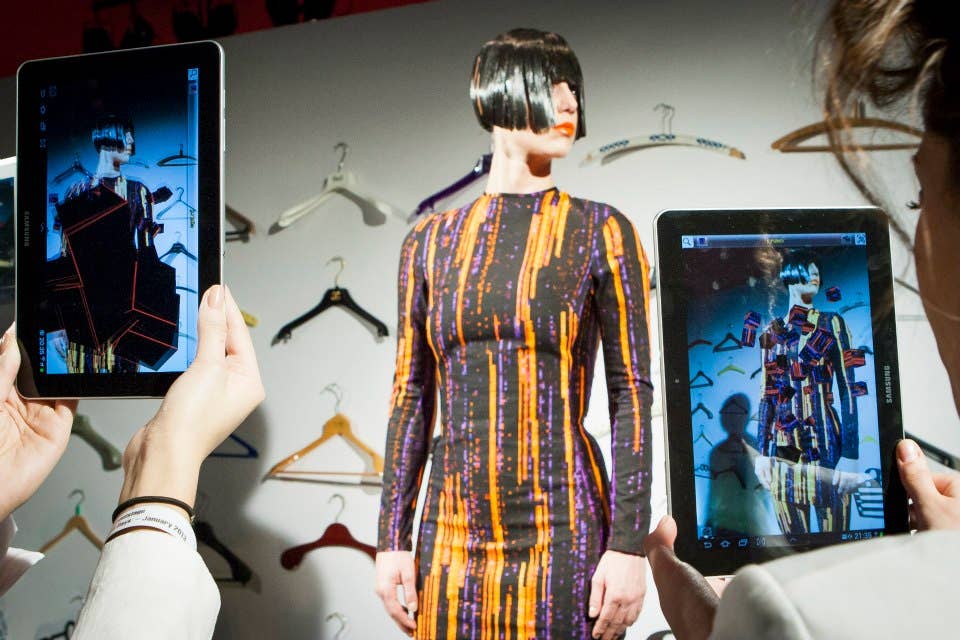Technology could help clothing retailers become more sustainable, expert says
Researchers explored the role that technologies like AI, VR and 3D printing could play in addressing industry problems like oversupply.

[Nov 6, 2021: Laura Oleniacz, North Carolina State University]
Researchers explored the role that technologies like artificial intelligence (AI), virtual reality (VR) and 3D printing could play in addressing industry problems like oversupply. (Credit: Creative Commons)
After each season, clothing retailers offer deep discounts to lure in consumers to buy leftover, unsold products. But what if they could do a better job predicting what consumers will want, in what size and in the right quantity to increase profits, and reduce textile waste?
In a recent article, Byoungho Ellie Jin, Albert Myers Distinguished Professor of Textile Economics and Management at NC State, explored the role that technologies like artificial intelligence (AI), virtual reality (VR) and 3D printing could play in addressing industry problems like oversupply. She suggested technology could help the industry become more sustainable, deliver more personalized goods and become more productive.
The Abstract: What technologies define the fourth industrial revolution?
Byoungho Ellie Jin: There are multiple technological advancements happening in the fourth industrial revolution including augmented reality, VR, big data, AI, and robotics. I was very curious how these technologies could impact the apparel and retail industry. I found they will help the industry with three themes: personalization, sustainability and productivity.
TA: How are new technologies addressing unmatched demand in fashion?
Jin: Demand is so unpredictable in the fashion industry. We don't know who will buy what, in what size, in what color and in what material. The biggest variable in the fashion industry is size. Even if you like the style and color, if it doesn't fit, you don't buy it. Apparel companies have to try to predict all of that.
That means there are tons of leftover products after each season, and there are tons of markdowns to get rid of all the production that's done. That means huge losses for the industry. If they can anticipate demand better, the industry could become more profitable.
Now, with AI analysis, we can make predictions in real time. We can analyze what consumers will buy, and what size they want. AI can anticipate and analyze it, and based on that information, we can develop sizes, lengths, color, and styles consumers would like to buy.
Related Stories
TA: You also talk about how AI will also help fulfill one of the industry's goals—to personalize apparel. Why is personalization important to the industry?
Jin: People are tired of choosing what has already been produced for the mass market. We want something that was created to suit our own personal needs.
Before the industrial revolution, moms would often make clothes for their children. They knew their children's sizes, colors they like, designs they like. Through the second and third industrial revolutions, there is mass production. There are more products, but they are limited. Our tastes, real preferences and real needs are not satisfied.
Now, personalization is possible. Through AI analyses, retailers know all our purchases. They know what I need.
3D printing and 3D knitting are also good for personalization. They can increase productivity, and create the opportunity for printing on demand. They could also potentially help with environmental sustainability as well.
TA: How can these technologies make the industry more environmentally sustainable? You write about how the textile industry is a major environmental polluter.
Jin: Every year, the industry produces tons of leftover products. After the 70%markdown, where do the unsold products go? We donate them, and then unsold items are shipped in bulk to developing countries. A lot of it ends up in landfills. The cotton and the silk, those natural fibers will biodegrade. But polyester and nylon, they're there forever. That's a huge environmental problem.
If we produce the right amount with accurate demand forecasting, we can reduce environmental pollution. AI could be important to accurate foresting. Also, 3D printing and knitting leads to less production waste, with less fabric left over in the production stage.
TA: How are retailers using virtual and augmented reality technologies?
Jin: Experiential retail is a keyword in the industry right now. A store is not just a place to buy something. We can buy something anytime. People want to have an experience. If we apply/utilize VR or AR technologies in the store, people perceive that as a fun experience. Some retailers are testing it out, but it's not heavily utilized right now.
In a recent study we did at NC State, we compared consumers' experience of browsing a website to their experience using VR goggles to look through a boutique in downtown Raleigh. We rented a camera and used it to take a video of the store.
Large retailers have tons and tons of stores across the country. They have nice websites. It's harder for a small boutique to increase store awareness. To help them, we asked: Why don't they utilize VR, and put that on their websites so people can experience the store virtually? Consumers might be more interested in their products and store, and more likely to visit. We thought we can help them promote their store and increase awareness.
The results of our experiment showed that with VR, consumers who experienced the 360-degree videos of the store reported positive emotions, and increased perceptions of the store's attractiveness. Their pleasure increased.
Initially, we thought we should have those goggles in consumers' hands to see the store environment. But now, there is also an app you can download. Even without wearing goggles, you feel you like are in the store. That means that without investments from the consumer side, it's still possible.
For more environmental news stories check out our Green Impact section at The Brighter Side of News.
Like these kind of feel good stories? Get the Brighter Side of News' newsletter.
Tags: #Green_Good_News, #New_Innovations, #3D_Printing, #AI, #AR, #Fashion, #Technology, #The_Brighter_Side_of_News



